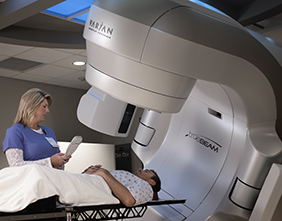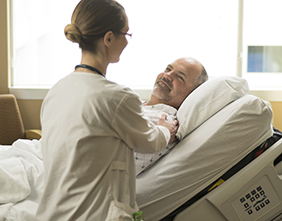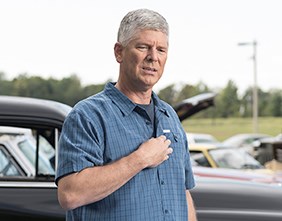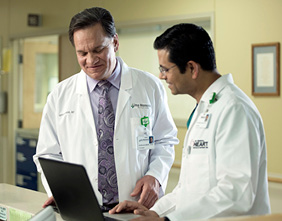What Comes After a Heart Attack? - The Role of Cardiac Rehab
posted on: 12/27/2018 9:48:28 AM
Health & Fitness Guest Columnist
Jennifer Rockhold, PA-C
Lima Memorial Heart Institute of Northwest Ohio
Coronary artery disease is a common condition in our society. The Centers for Disease Control and Prevention estimates approximately 735,000 heart attacks occur yearly in the United States. And, as you likely understand, recovering from a heart attack is not something that happens overnight. You might be familiar with some of the steps that take place following a cardiac event, like following up with your cardiologist, taking proper medication and modifying your diet, all with the goal to be cleared to return to work or your previous activities. However, there is one more important component of the recovery process - cardiac rehabilitation.
The purpose of cardiac rehab is to provide both education and a guided exercise routine, within a supervised environment, which is tailored for the individual person, allowing patients to learn more about healthy lifestyle practices and also to rebuild their strength and exertion after suffering a heart attack or stent placement. Other than a heart attack or stent placement, there are numerous reasons someone may undergo cardiac rehabilitation, including recovery after coronary artery bypass surgery, heart valve repair or replacement or even heart transplant. There are also options for pulmonary rehabilitation for those who are affected by lung disease.
The first step toward participating is enrollment and education about the program itself, which is addressed with the patient by a nurse or exercise specialist before the patient is discharged. Patients typically begin cardiac rehab approximately two weeks after their heart attack or stent placement, or one month after their open heart surgery. The cardiologist must clear the patient to begin cardiac rehab, and in some cases, a stress test is required as well. This is meant to ensure the patient is in the best physical shape at that particular time to embark on the next phase of their recovery. Patients in cardiac rehab will typically participate three times a week for 6-12 weeks. A typical session in cardiac rehab lasts an hour and involves a warm-up, conditioning activity and a cool-down. In addition, vital signs are monitored throughout the session as an additional level of care. As the patient progresses through cardiac rehab and improves over time, so too will their exercise program intensify. It’s quite gratifying to point out to our patients just how far they have come when they look back at the first day of their rehab and compare it to their last day.

The cardiac rehab unit is directed by and staffed with highly-skilled individuals to include physicians, nurses, respiratory therapists and exercise specialists, as well as assistance from a dietitian. Common exercise activities include walking on the treadmill, riding a recumbent bicycle, resistance activities and using free weights. Though exercise is a very important component of cardiac rehab, it is not the only area that is addressed. Patients in cardiac rehab also receive education and counseling about their particular cardiac issues, including healthy lifestyle changes, nutritional counseling and access to other resources with the goal of lowering their risk of future cardiac issues.
The American Heart Association and the American College of Cardiology strongly encourage cardiac rehab for patients and provide updates and recommendations on their website – www.heart.org. Studies have shown the benefit of cardiac rehab programs in reducing the risk of cardiovascular death and reducing the rate of readmission to the hospital.
Though a patient may be discharged home after having a heart attack or stent placement, their recovery does not stop. Active participation in cardiac rehabilitation programs will lead to better lifestyle habits and educational opportunities that can provide better outcomes over the long term. If you or someone you know might be a candidate for cardiac rehab, or if you would like to learn more, contact the Cardiac Treatment Center at Lima Memorial by calling 419-226-5036.
Originally published in The Lima News Health and Fitness section.
Website





